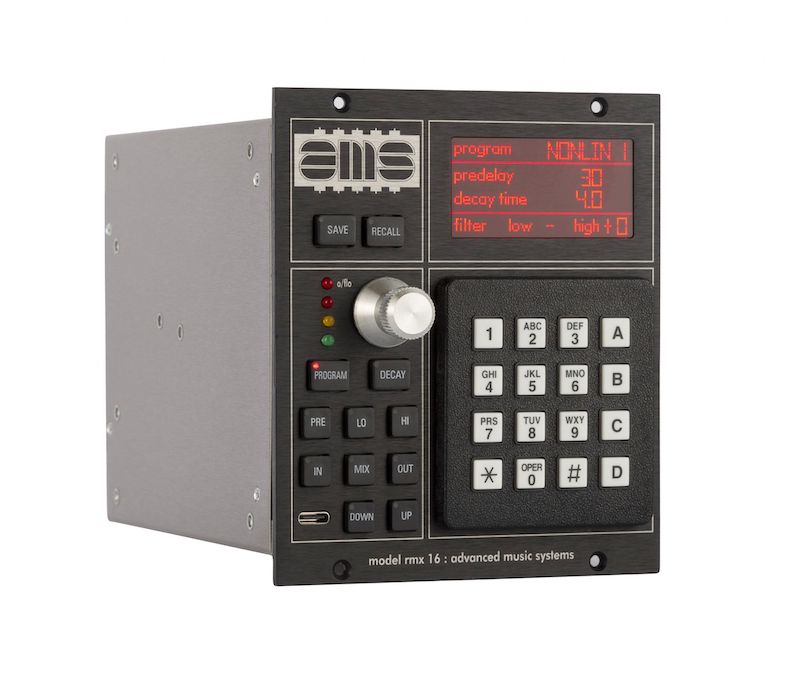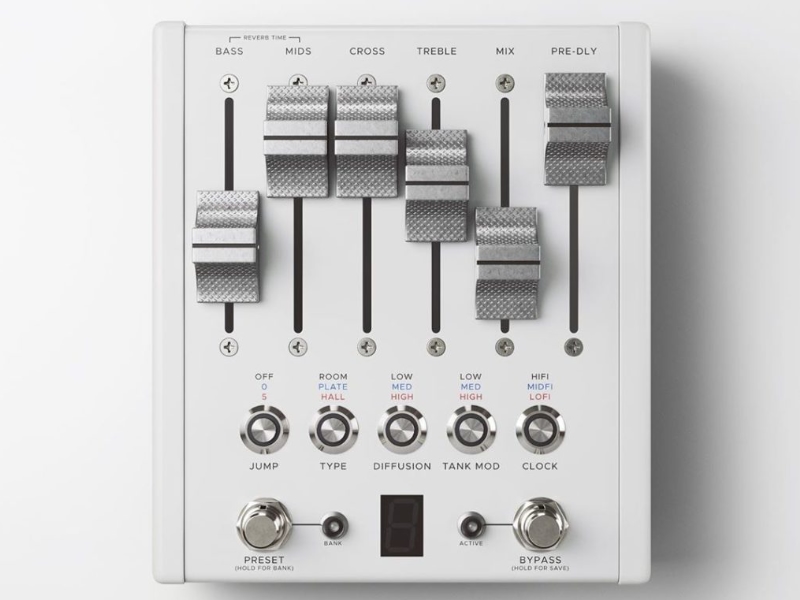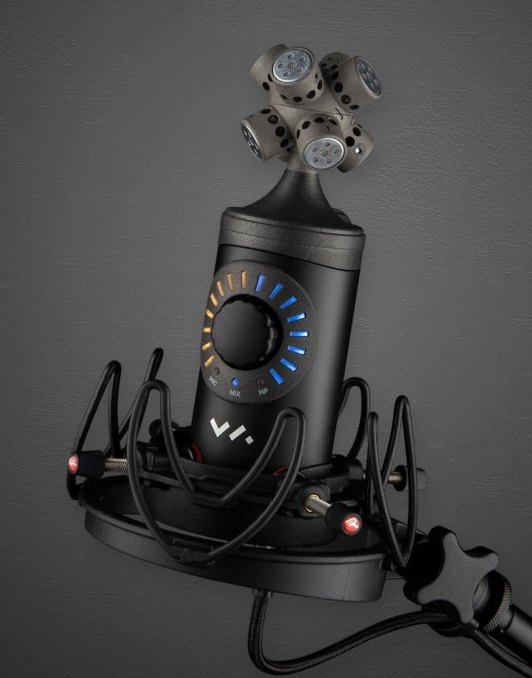The sheer amount of gear on display at the Winter NAMM convention can be overwhelming, even before you factor in the collective noise of countless simultaneous floor demos. The expanse of the entire Anaheim Convention Center filled with manufacturers' wares and more than 100,000 musicians, builders, and other assorted gearheads—well, it's no surprise that silence at the show can be hard to come by.
There are times you just have to laugh—when the live-speaker salesman cranks what must've been a thousand watts of Ed Sheeran or when endless riffs keep interrupting your video shoot—but we at Reverb did our best to cut through the din and identify the most-exciting new releases, as well as the trends we couldn't help but notice.
Below, we'll try to put a point on some of the standout gear and emergent stories. But you should know: This isn't meant to be an exhaustive list of great releases in any way—there are simply just too many to name. Let us know your own favorites in the comments. And to see all of our coverage from the convention, check out our NAMM 2020 news hub.
Exciting releases first unveiled at NAMM 2020 are already appearing on Reverb for sale or pre-order. Check out the new synths, guitars, pedals, and more gear from NAMM 2020.
Korg's Synth Domination
If you surveyed the crowd for an opinion on Korg, you'd just as likely be met with gratitude as wonder. Not only did the company reissue the ARP 2600, limited-edition full-sized MS-20s in custom colors, and the RK-100 S2 Keytar, but it also released one of the most talked-about brand-new synths with its Wavestate Wave-Sequencing Synthesizer. When the unannounced Opsix FM synth miraculously appeared at the show, it left you baffled: How did Korg find the time to do all this?
That the Opsix turned out to be a concept model let us know Korg was still run by mortals but still took nothing away from the dominating appearance the company made at this year's NAMM.
Pro Audio's Mix-and-Match Market Share
Universal Audio was hard at work hyping the release of Luna ahead of its Thursday morning launch, asking through its ads and social media posts for us to speculate on what it might be. With a slogan like "Analog Sound at the Speed of Light," it almost could've been anything. But now that we know Luna, that is a pretty apt description.
To explain: UA's Apollo interfaces already allow you to use UAD's plugins and preamp modeling without relying on your computer's processors alone. That's because the processors inside UA's hardware—the "Duo Core," "Quad Core," etc. found in the Apollo line's names—bear the brunt of all your instances of virtual 1176s, Neve channel strips, and other UAD plugins.
While UA is not calling Luna a DAW but rather a "recording system," it is essentially a DAW—and a very powerful one at that—that also makes use of the hardware interfaces' processors in order to give that same real-time processing for all of your recording and mixing needs. Marrying UA hardware to UAD plugins has long been a winning combination for Universal Audio. By tossing a DAW into the mix (which, by the way, is free to all Apollo and Arrow Thunderbolt interface users, new or old) seems a wise and natural progression that will give you the "analog sound" of UAD plugins, tape emulations, and more "at the speed of light," or rather, at the near-zero latency Apollo interfaces provide.
And of course, there are parallels to be drawn to Avid's hardware offerings and Pro Tools software, with PreSonus' interfaces and its Studio One DAW, or even in smaller moves by pro audio companies looking to expand into another segment of the audio world, as SSL did this week with its announcement of its first-ever line of personal studio interfaces.
Guitars Brands Nailing Their Audiences' Wants
The scope of guitar players is large and diverse, and the breadth of options various players want goes from "nothing but classics" to "the future of guitars, today." To their credit, the guitar companies at NAMM seemed to check each and every box.
We said at last year's NAMM that Fender offered something for everyone, and the company outdid itself this year. For the players that want legacy greatness, Fender offered the 70th Anniversary Broadcasters. For players looking for affordable '70s vibes or '80s shredding machines, Fender reissued the Lead Series and the HM Strat. For players looking for something fresh and offbeat, Fender gave us a Black Beauty Tele, a Spark-O-Matic Jazzmaster, and other strange creations in its Parallel Universe Series Vol. II.
Post-bankruptcy Gibson continued down the course set out for it by the company's most vocal fans, who shunned the pre-bankruptcy futurism of Firebird Xes and Robot Tuners and just wanted well-made classics from Gibson and its sub-brands. Well, these fans had plenty of reason to rejoice at NAMM. Just as Gibson's own lines have been redesigned into Original and Modern Collections, so too were the rebooted '80s shredders of Kramer, and the "Inspired By Gibson" collections of Epiphone.
There's an easy lay-up of a joke to be made at Epiphone's expense—"aren't they always inspired by Gibson?"—which plenty of commenters have tried to land. But the new Inspired By Gibson Original and Modern Collections are in fact closer to Gibson's own than ever before, and will now have open-book headstocks closer to (though not the same as) Gibson's, a result of having listened to some critics' complaints that Epiphone's recent sharp-angled headstocks are eyesores.
In a particularly exciting move for Epiphone fans who know well and good that Epiphone made great guitars of its own design both before and after Gibson bought it, Epiphone will now have its USA-Made line of guitars, including the ever-popular Casino and the Texan acoustic.
Another example of a company knowing its audience well can be found in Ibanez, which honored two of its most visible players with two new signature guitars. Steve Vai—whose Ibanez JEM is one of the most enduringly popular signature guitars of all time—gets an updated one in the form of the Ibanez PIA. And Yvette Young—the increasingly beloved Covet guitarist who can often be seen finger-tapping her prog emo riffs on an Ibanez Talman—gets a Talman-esque model of her own with the YY10.
The type of contemporary players that look at Gibsons and Fenders as the guitars of their grandfathers could also find plenty of options. Tosin Abasi's latest models of incredibly ergonomic, easy-to-play, extended-range guitars include one with a carbon fiber top that creates an optical illusion of 3D-like depth. And brands like Ormsby, Kiesel, Vigier, Mayones, Sully, and more continue to offer flashy looks and fast-playing with growing lineups of high-performance guitars.
The Ever-Expanding Pedal Universe
As regular readers of Reverb News will know well, the guitar effects industry continues to be one of the areas of continued creativity, brilliance, and excitement within the larger guitar market.
One hall in particular at NAMM was filled to the brim with legacy and emerging pedal builders alike. Alexander Pedals' Superball Kinetic Modular, Death By Audio's Rooms, and Origin Effects Revival Trem were just a few of the brand-new pedals that made us stop in our tracks. You can see those and more in Andy Martin's favorites in the video above.
But we couldn't possibly fit all the cool new pedals in one video. Gamechanger Audio's new Light Pedal, Rainger FX's Minibar Liquid Analyzer, the Fuzzrocious Croak Double-Filter Fuzz... there's an ever-growing abundance of riches in the pedal world. Click any of those links to read more about these individual pedals.
The Return of Early Digital Reverbs


The most popular digital reverb unit of the 1980s was the AMS RMX16—an early rackmounted effects unit that was used by pop titans like Peter Gabriel, Kate Bush, and many others. That hallowed "In the Air Tonight" drum reverb sound—though originally made via analog equipment and a particular room at Townhouse Studios—was soon turned into the original RMX16's "NonLin" algorithm and used on innumerable hits throughout the decade.
AMS Neve announced at NAMM 2020 that it would be reissuing the classic reverb processor in a new 500 Series format—making it more affordable for today's engineers and easier to fit in modern studio spaces.
Meanwhile, two of the most creative guitar effects pedal companies—Chase Bliss Audio and Meris—collaborated on a remake of another classic early digital reverb. The Lexicon 224, though debuting in 1978, would be heard on tracks from Talking Heads to Prince to U2 throughout the '80s.
Original 224s feature a fader-equipped remote, creating an entryway for Chase Bliss to put its new Automatone fader design into practice, with the help of Meris' expert DSP prowess. The resulting collaboration—the CXM 1978—is a sharp-looking effects unit that recreates three of the Lexicon 224's famous algorithms.
The lush, huge reverbs of the '80s are on track for a big return this decade.
Waves Makes a Vocal Synth to Rule Them All
Recent years of pop, R&B, and hip-hop production have seen the increasing use of effected vocals and, alongside them, a rise in vocal-controlled soft-synths and effects plugins that want to attach unique sounds to the world's oldest musical instrument. Through everything from Antares' suite of Auto-Tune products, Vocoders, creative uses of Melodyne, iZotope's Vocal Synth 2, or any number of sampling techniques that chop, pitch up, or pitch down vocals—there are numerous avenues to introduce extra flair to vocals.
Waves' OVox Vocal ReSynthesis tool is a crowning achievement of many various strands of vocal manipulation—giving users the ability to turn their voice into something else entirely. Want the Vocoder-esque robot voice? That's easy. Want to sing a part and swap it for horns? That can be arranged. Want to create instant harmonies for your vocals but play them via a soft-synth? That can be done as well.
It's hard to overstate just how wide-ranging the product's possibilities really are. First-time users at Waves' NAMM booth were constantly surprised at what they were able to do, while the vocal synth's developer, a young Waves employee purported to be some kind of music-software wunderkind, looked on with smiles.
An Affordable Entry Into Immersive Audio

Last year, we wrote about the growing field of immersive audio—aka spatial audio, 3D audio, and ambisonics—where tracks can be recorded and played back in life-like surround sound. It's already very popular in VR video games, because if you want to create a realistic virtual world, the sounds need to emanate from all points above, behind, and around the player.
The ramifications for music are harder to suss out. Abbey Road's research department are helping lead the way, and companies like Sennheiser and Rode are making Ambisonic microphones, but the barriers to entry for musicians are still high—especially when considering how much music is created in home or project studios. Not only are most 3D audio mics expensive (or severely limited if affordable), you'll also need other dedicated equipment for recording and mixing if you don't want to compromise on sound quality or the life-like immersion 3D audio can offer.
Voyage Audio is a brand-new company (and just a two-man operation) that launched its first product, the Spatial Mic, in October 2019. The eight-capsule ambisonic mic offers professional-grade 3D audio recording, mixing via Voyage Audio's own free software, and easy connectivity through USB—letting you use the eight audio tracks coming in from the mic through your own existing equipment—all for $899 USD.
It's an ambitious entrance into a scene that is, so far, populated with leading, big-name brands by a young company that wants to lower the barrier to entry to immersive audio without sacrificing the substance.
The Ascendent MIDI 2.0
One last point I'll make relatively quickly, since I've recently written about it at length, is the new MIDI 2.0 specification that will be arriving in the very near future.
The new spec is the first time that MIDI 1.0 has had a complete overhaul in more than 30 years, and it's set to bring many benefits to musicians once it finally arrives. To a certain segment of NAMM-goers, MIDI 2.0 is the big story, because—even though it was announced last year—its release is now imminent, according to those in the know.
When updating the existing protocol used by companies from Roland and Native Instruments to Apple and Google, there are many, many factors that need to be addressed, debated, proposed, and agreed upon. The vast majority of that work is done, with the MIDI 2.0 protocol now approved by those companies and the many other voting members of the MIDI Manufacturers Association and Japan's Association of Music Electronics Industry.
Once the similar USB member organization votes to allow the MIDI 2.0 protocol to travel across USB, it will be open season for hardware and software manufacturers to put forward their new MIDI 2.0-capable gear and programs.
Roland jumped the gun with its new A-88MKII. Announced at NAMM, the controller is a standard MIDI 1.0 controller at the moment, but inside, it is ready to send and receive MIDI 2.0 messages once the protocol is live. There were several meetings at NAMM with developers from Yamaha, Google, Roland, Art + Logic, and others where they discussed the details of implementation.
Whenever it arrives in full, MIDI 2.0's higher resolution, bidirectional communication, and intelligent information sharing will connect instruments and software programs in ways that are still being dreamt up, but are already exciting some of the world's brightest instrument developers.
Did you spot different trends at NAMM or want to shout out your own favorite product releases? Let us know in the comments. For all of our coverage of gear news and new product announcements from NAMM 2020, click here.
